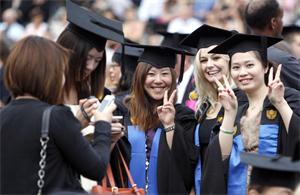Progress in China's Human Rights in 2014
(China Daily) Updated: 2015-06-09 08:50Judicial system reform advanced. The Third Meeting of the Central Leading Group for Comprehensively Deepening the Reform deliberated on and adopted the Framework Opinions on Several Issues Concerning Judicial System Reform and other documents. Shanghai Municipality and Guangdong, Jilin, Hubei, Hainan, Guizhou and Qinghai provinces were designated as pilot areas to implement four judicial reform measures, namely, improving the categorized management of judicial personnel, improving the judicial accountability system, improving the career security of judicial personnel, and implementing the integrated management of personnel, finance and property in the people's courts and procuratorates below the provincial level. According to the Plan of the Supreme People's Court on Setting up Pilot Circuit Courts, the Supreme People's Court set up the First Circuit Court in Shenzhen City, Guangdong Province, and the Second Circuit Court in Shenyang City, Liaoning Province, to hear major administrative, civil and business cases across administrative regions, shifting its work focus to lower levels and resolving disputes on the spot, thus making it more convenient for the ordinary people to file lawsuits and ensuring judicial justice. In line with the Opinions of the Supreme People's Court on Comprehensibly Deepening the Reform of the People's Courts, Beijing and Shanghai have set up trans-administrative regional intermediate courts to handle major criminal, civil and administrative cases; Beijing and Shanghai have been exploring ways of setting up trans-administrative regional people's procuratorates, focusing on administrative litigation supervision cases, major civil and business supervision cases, major duty-related cases, major criminal cases concerning environmental and resource protection and food and drug safety, so as to ensure that the law is enforced correctly and consistently across the country.
Administrative adjudication system reformed and improved. The Standing Committee of the NPC adopted the resolution on amending the Administrative Litigation Law, further improving the systems covering every aspect of administrative litigation, from bringing a case to court, the trial of the case, to making of the judgment and enforcement, so as to further protect the lawful rights and interests of citizens, legal persons and other organizations. China has expanded the case-filing scope for administrative litigation to include such activities as administrative bodies' abuse of power to exclude and restrict competition, illegal raising of funds and apportioning expenses, and failing to provide subsistence allowances or social security benefits. China practices case-filing registration and has extended the time limit for prosecution to six months. In 2014 the people' s courts at all levels took up 151,000 administrative cases of first instance and concluded 131,000 of them, up 16.3 percent and 8.3 percent, respectively, over 2013. Shandong, Guangdong, Shaanxi, Jiangsu, Yunnan and Henan provinces continued the pilot work of centralized jurisdiction of trans-regional administrative cases.
Judicial protection of intellectual property rights improved. In 2014 Beijing, Shanghai and Guangzhou set up intellectual property courts. The Supreme People' s Court issued the Guiding Opinions on Selecting and Appointing Judges for Intellectual Property Courts (Trial), which prescribed the principles, criteria and approaches for selecting and appointing such judges, and improved the professional level of intellectual property adjudication. In 2014 the people's procuratorates at all levels prosecuted 9,427 persons for infringement of trademarks, patents, copyrights or business secrets, up 7.1 percent over 2013. The people's courts at all levels concluded 110,000 intellectual property cases of first instance, up 10 percent over 2013.
State compensation and judicial assistance enhanced. China has made it clear that the principles and conditions guiding the compensation for psychological damage can be applied in state compensation cases, and is making efforts to build a joint mechanism for state compensation to safeguard the lawful rights and interests of compensation applicants. In 2014 the people's courts at all levels concluded 2,708 state compensation cases, and decided on a compensation amount totaling 110 million yuan. China has improved the criminal victim relief system, reducing or exempting litigation fees totaling 180 million yuan, so as to protect the litigation relief rights of impoverished people.
V.
Rights of Ethnic Minorities
In 2014 China's ethnic minorities and areas inhabited by ethnic minorities made new developments in various social programs, and ethnic minorities' civil, political, economic, cultural and social rights were further guaranteed.
The rights of ethnic minorities to participate in the administration of the state are effectively guaranteed. All ethnic autonomous areas enjoy autonomous rights in a wide range of areas in accordance with the law, including local legislative power, flexibility in the execution of relevant state laws and regulations based on the characteristics of each ethnic minority, the right to use their own spoken and written languages, power of personnel and financial management, and the right of independently developing their own culture and education. Nationwide, the number of civil servants from ethnic minorities keeps increasing. The proportion of such civil servants in the total number of civil servants is higher than the proportion of ethnic minorities in the country' s total population, and is on the rise every year. In Tibet, of the 34,244 deputies to the people' s congresses at all four levels, 31,901 persons, or 93 percent, are from the Tibetan or other minority communities. The Tibet Autonomous Region has 20 deputies to the NPC, 14 of whom are Tibetans or from other minority groups. Tibetans and other ethnic minorities account for 70.53 percent of the government officials in the Tibet Autonomous Region. Tibetans and other ethnic minorities account for 73.03 percent of the leaders at county and township levels.
Ethnic-minority areas achieve fast economic growth. In 2014 the per capita disposable income of urban residents in the Inner Mongolia, Guangxi Zhuang, Tibet, Ningxia Hui and Xinjiang Uygur autonomous regions, and Guizhou, Yunnan and Qinghai provinces, which have large minority populations, reached 28,350 yuan, 24,669 yuan, 22,016 yuan, 23,285 yuan, 23,214 yuan, 22,548 yuan, 24,299 yuan and 22,307 yuan, respectively, a year-on-year increase of 9 percent, 8.7 percent, 7.9 percent, 8.4 percent, 10.1 percent, 9.6 percent, 8.2 percent and 9.6 percent, respectively; the per capita disposable income of rural residents in the same areas reached 9,976 yuan, 8,683 yuan, 7,359 yuan, 8,410 yuan, 8,724 yuan, 6,671 yuan, 7,456 yuan and 7,283 yuan, respectively, a year-on-year increase of 11 percent, 11.4 percent, 12.3 percent, 10.7 percent, 11.2 percent, 13.1 percent, 10.9 percent and 12.7 percent, respectively. In 2014, the total foreign trade value of these five autonomous regions and three provinces registered 814.8 billion yuan, growing by 15.4 percent over the previous year and 13.1 percentage points higher than the national growth rate. Exports reached 552.6 billion yuan, increasing by 20 percent over the previous year and 15 percentage points higher than the national growth rate. The rural impoverished population decreased by 3.57 million from the previous year, with a poverty reduction rate of 13.9 percent. The central government appropriated 4.059 billion yuan as special funds for the development of minority groups, a growth rate of 10 percent compared to 2013. Aiming to support the development of border areas, where large numbers of minority peoples reside, the central government provided 2.88 billion as assistance funds for revitalizing border areas and bringing prosperity to their residents and central budgetary investment, an increase of 88.9 million yuan over the previous year. The central budgetary investment and funds for the development of minority groups provided 1.53 billion yuan to support the development of minority groups with small populations, an increase of 87.1 million yuan compared with 2013. The state vigorously implemented protection and development projects for ethnic-minority villages with cultural significance, and provided 490 million yuan as specialized funds, up 22.5 percent over the previous year.
Quality of life in Tibet and Xinjiang keeps improving. In 2014 the growth rate of GDP of the Tibet Autonomous Region was 3.4 percentage points higher than the national average. The region completed its housing project for farmers and herdsmen, after eight years of incremental investment that totaled 27.357 billion yuan. The region' s 2.3 million farmers and herdsmen of 460,300 households have moved into solid and convenient houses. The per capita living space of Tibetan rural and urban residents is now 33.77 sq m and 41.39 sq m, respectively. Lhasa completed a natural gas heating project, enabling 105,200 households to enjoy "warm winters." Now Tibet has a public medical and health service system combining Tibetan, Western and traditional Chinese medicine that covers all urban and rural areas of the autonomous region with Lhasa as the center. Free medical services are now available to all the farmers and herdsmen in Tibet. The subsidy for each farmer or herdsman for these medical services was raised to 380 yuan per person in 2015. The autonomous regional government allocated a special fund of 23 million yuan to set up a major disease supplementary health insurance for farmers and herdsmen. A project is being carried out to provide the "five guarantees" (food, clothing, medical care, housing and funeral expenses) to the needy and orphans in communal settings. Some 72 percent of residents entitled to the "five guarantees" are now supported, and more than 5,900 orphans have received assistance from the government in this manner. The average life expectancy in Tibet has increased to 68 years and the death rates of infants and women in childbirth have dropped significantly. The Xinjiang Uygur Autonomous Region ranks among the top in economic growth in the country, with a growth rate 2.6 percentage points higher than the national average. In 2014 the public financial revenue of the Xinjiang government reached 128.26 billion yuan, an increase of 13.7 percent compared to 2013; 70.3 percent of the public financial expenditure of the autonomous region was used to improve its people' s livelihood; the government in Xinjiang had fulfilled its promise to implement 150 key livelihood projects of 25 types. Xinjiang has ranked among the top in China in the growth of per capita disposable incomes of both rural and urban residents for three consecutive years. The region's employed population has increased by 380,000 and its poverty-stricken population has been reduced by 100,000. Sums of 24.644 billion yuan, 26.24 billion yuan and 3.653 billion yuan have been used in building comfortable housing for 307,800 families, 265,200 government-subsidized apartments, and 30,100 units of nomad-settlement housing, respectively. The region has newly developed 134 sites of safe rural drinking water, supplying 600,000 rural residents. Some 3.42 billion yuan has been allocated for the construction and reconstruction of rural highways with a total length of 6,087 km, providing better travel conditions for 850,000 farmers and herdsmen. Xinjiang has raised the per capita funding level for the new rural cooperative medical care system to 436.9 yuan, and the per capita expenditure on public health services to 35 yuan. Screening breast cancer and cervical cancer in women, treating congenital heart disease in children, and providing medical care to those who suffer from 54 kinds, or 22 categories of serious diseases in agricultural and pastoral areas are in progress as planned.

I’ve lived in China for quite a considerable time including my graduate school years, travelled and worked in a few cities and still choose my destination taking into consideration the density of smog or PM2.5 particulate matter in the region.











